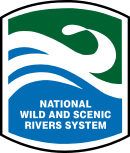National Wild and Scenic River

National Wild and Scenic River is a designated river basin in the United States .
The National Wild and Scenic Rivers Act , was created on the recommendation of the Outdoor Recreation Resources Review Commission (ORRRC), a commission appointed by the President of the United States. Original and scenic river areas should be protected from human interference that would endanger these properties. The bill was introduced into the US Congress by Senator Frank Church and, after its passage, signed by President Lyndon B. Johnson on October 2, 1968.
Rivers or stretches of rivers can be designated and protected as Wild and Scenic Rivers by Congress or the United States Department of the Interior . Rivers that are characterized by scenic beauty, cultural or historical importance, high recreational value, geological peculiarities or flora and fauna worth protecting can be awarded this status.
The individual Wild and Scenic Rivers are administered by one or more government agencies ( Army Corps of Engineers , Bureau of Land Management , National Park Service , US Forest Service , US Fish & Wildlife Service ) or states.
A river designated as a Wild and Scenic River enjoys a protection status that differs from that of a national park or a wilderness area . The focus is not on active environmental protection or the fundamental prevention of human interference, but on preserving the special features of the respective river.
